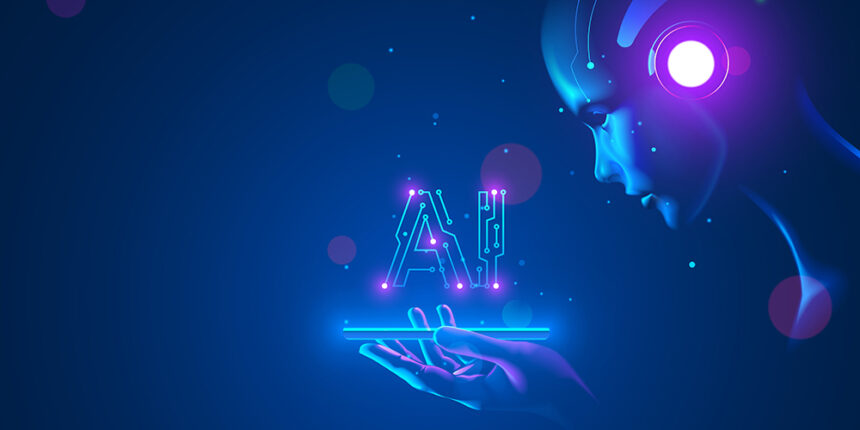Imagine stepping into a bustling train station, not to be greeted by the rumble of announcements and crowds, but by a calm, friendly voice emanating from a kiosk. This voice, powered by artificial intelligence, answers your questions about train schedules, helps you navigate the station, and even offers local restaurant recommendations – all in perfect, personalized detail. This isn’t a scene from a futuristic film; it’s the reality of AI chatbots seamlessly integrating into our daily lives.
This new era of digital companionship is fueled by significant advancements in artificial intelligence (AI), particularly in the development of sophisticated knowledge base software. These “brains” behind the chat interface equip AI entities with vast stores of information, allowing them to hold surprisingly human-like conversations and perform increasingly complex tasks. But as we welcome these digital companions into our lives, we must also grapple with the complex questions they raise: What are the true capabilities and limitations of AI chat? And how will their emergence transform the future of human interaction?
Understanding the Mechanics: The Technologies Powering AI Chat
At the heart of every AI chatbot lies a powerful synergy of technologies:
- Artificial Intelligence (AI): This forms the chatbot’s cognitive engine, allowing it to learn from data, recognize patterns, and make decisions. Machine learning, a key facet of AI, enables the chatbot to refine its responses over time, becoming more accurate and relevant with each interaction.
- Natural Language Processing (NLP): This technology enables the chatbot to understand and interpret the nuances of human language – from deciphering slang and idioms to recognizing subtle cues like sarcasm.
- Knowledgebase Software: This critical component acts as a centralized and meticulously organized library for the AI. It’s within this digital repository that the chatbot can access and retrieve vast amounts of information to answer your questions, provide relevant insights, and even tailor its responses to your specific needs.
The interplay of these technologies is what allows a chatbot to seamlessly transition from discussing the weather to recommending a book, all while maintaining a conversational tone and adapting to your individual preferences.
Beyond Simple Conversation: AI Chatbots Reshaping Our World
The real magic of AI chatbots lies in their versatility. No longer confined to basic customer service inquiries, they are proving their mettle across a spectrum of applications:
- Personalized Learning, Powered by AI: Imagine a world where every student has access to a personalized tutor available 24/7. Platforms like Duolingo, for language learning, and Khan Academy, for a range of subjects, are already leveraging AI chatbots to tailor lessons to individual learning styles, provide instant feedback, and answer questions in a way that feels more like a conversation than a lecture. This personalized approach has the potential to revolutionize education, making it more engaging, effective, and accessible to all.
- Healthcare at Your Fingertips: While not a replacement for qualified medical professionals, AI chatbots are transforming how we access healthcare information and support. Babylon Health, for instance, offers a chatbot that conducts preliminary symptom checks, provides basic medical advice, and even schedules appointments, making healthcare more convenient and accessible, particularly for those in remote areas or with limited mobility.
- Entertainment Reimagined: AI chatbots are pushing the boundaries of creativity and entertainment. Platforms like AI Dungeon allow users to co-create interactive stories with AI, while tools like Jukebox, developed by OpenAI, can generate surprisingly realistic and original music in various styles. These applications blur the lines between passive consumption and active participation, offering new avenues for creative expression and personalized entertainment.
- The Evolving Landscape of Mental Health: In a world grappling with increasing stress and mental health concerns, AI chatbots like Woebot are emerging as valuable tools. Woebot, for example, provides users with cognitive behavioral therapy (CBT) exercises, tracks their mood, and offers support, all through a conversational interface. While not a replacement for human therapists, these tools offer a low-barrier entry point for individuals seeking mental health support and can be particularly helpful for those who might not otherwise have access to traditional therapy.
Navigating the Ethical Landscape: A Future Fraught with Promise and Peril
As we integrate AI chatbots into more aspects of our lives, it’s crucial to acknowledge the potential pitfalls alongside the promise:
- The Empathy Gap: While AI chatbots can mimic human-like conversation, they lack genuine empathy. This raises concerns, especially in sensitive contexts like mental health support. It’s critical to establish clear boundaries and ensure that users understand the limitations of AI companions.
- The Specter of Bias: AI systems are only as good as the data they are trained on. If this data reflects existing societal biases, the chatbot may perpetuate and even amplify these biases, leading to unfair or discriminatory outcomes. Addressing this requires ongoing vigilance, diverse data sets, and rigorous testing to identify and mitigate bias.
- The Future of Work in the Age of Automation: As AI chatbots become increasingly sophisticated, concerns about job displacement, particularly in customer service and support roles, are understandable. It’s essential to consider the societal impact of automation and explore avenues for retraining and reskilling workers for the jobs of the future.
Shaping a Future Where AI Augments, Not Replaces, Humanity
AI chatbots represent more than just a technological advancement; they are a mirror reflecting our evolving relationship with technology and a testament to our desire for seamless, personalized experiences. As we venture further into this uncharted territory, it’s our responsibility to guide the development of AI in a direction that benefits all of humanity.
This requires open dialogue, ethical frameworks, and a commitment to harnessing the power of AI to create a more inclusive, equitable, and connected future – a future where AI augments our capabilities, not diminishes our humanity. The story of AI is still being written, and we have the opportunity to craft a narrative where technology empowers us to connect more deeply with each other and build a brighter future for all.
Read More From Techbullion And Businesnewswire.com








